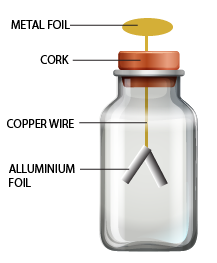CBSE Class 8 Science Chapter 12 Important Questions -Some Natural Phenomena - Free PDF Download
FAQs on Important Questions for CBSE Class 8 Science Chapter 12 - Some Natural Phenomena
1. What is the curriculum of class 8 Science?
Ans: There are 18 units in class 8 Science book and the names are Synthetic Fibres and Plastics, Microorganisms: Friend and Foe, Crop Production and Management, Materials: Metals and Non-metals, Combustion and Flame, Reaching the Age of Adolescence, Conservation of Plants and Animals, Cell Structure and Function, Friction, Force and Pressure, Light, Pollution of Air and Water, Some Natural Phenomena, Stars and the Solar System, Chemical Effects of Electric Current, Sound, Coal and Petroleum and Reproduction in Animals.
2. What measures should one take during an earthquake?
Ans: If you are at home at the time of an earthquake, please make sure to stay under a table until the tremors stop entirely. Plus, be away from tall constructions and buildings as they hold a high chance of falling. Also, if you are sleeping or lying in bed, use a pillow to protect your head.
Similarly, if you are outside your home, reach an open area or field away from trees, buildings, etc. Furthermore, if you are travelling, stay inside the car or any other vehicle and allow the driver to reach a safe spot. Apart from that, it is also advisable to make simple constructions, such that they are quake free.
3. What causes lightning?
Ans: When electric discharge occurs between earth and clouds, or simply between clouds, you see lightning. Along with cloud formation, friction also occurs between the water droplets in atmosphere. As a result, friction helps to charge to particles present in the environment. In the clouds, positive charges stay at top, and negative charges accumulate at the bottom of the same. When these charges increase, the negatively charged particles move towards ground and produce a streak of electrical discharge, known as lightning.
4. How can I prepare for Chapter 12 for the Class 8th Science exam?
Ans: Good preparation includes a thorough understanding of the chapter, learning, and being able to answer all varieties of questions accurately. Chapter 12: Some Natural Phenomena of Class 8 Science briefs the students about natural calamities and phenomena that we should be aware of along with the preventive measures for each of them. Study the chapter with determination, learn the important diagrams, solve the questions from your textbooks, and use revision notes to be exam-ready.
5. What are the measures that can save us from lightning?
Ans: There are several ways to keep ourselves protected from lightning, as explained in Chapter 12 of Class 8th Science. Some of them are:
Stay in a covered area: You should stay inside a building or vehicle in case of lightning.
Do not touch any electricity conductors: There is a high chance of being at the end of an electric shock if you get in contact with any electricity conductor like wires, metal pipes, or water around the time of lightning.
6. List the topics covered in Chapter 12: Some Natural Phenomena of Class 8th Science.
Ans: ‘Some Natural Phenomena’, Chapter 12 of Class 8th Science covers concepts such as lightning, charging by rubbing, types of charges and their interaction, types of charge, the story of lightning, lightning safety, and earthquakes. Students must practice all the diagrams and learn the theory well to solve the given questions for the chapter. It is essential to revise the chapter from time to time for effective learning. This way you will remember the concepts better.
7. Why can copper not be charged easily with friction?
Ans: Materials that do not conduct electricity can be charged effortlessly with friction. Copper is an efficient conductor hence, friction cannot be used to charge it easily. Chapter 12 of Class 8th Science explains more of such experiments undercharging by rubbing. This is a fun way to learn the concepts that seem troublesome at first. You can get important questions by Vedantu (vedantu.com) free of cost to revise the chapter before the examination.
8. How do Important Questions help for Chapter 12 of Class 8th Science?
Ans: Solving the important questions is the best method to revise the chapter effectively. The PDF provides you with handy questions that cover all the crucial concepts and diagrams in the chapter. These questions are designed by subject experts by looking at the various paper patterns followed through the years and are trustworthy. Therefore, the students must take the time to solve the important questions for each chapter before the examinations.























